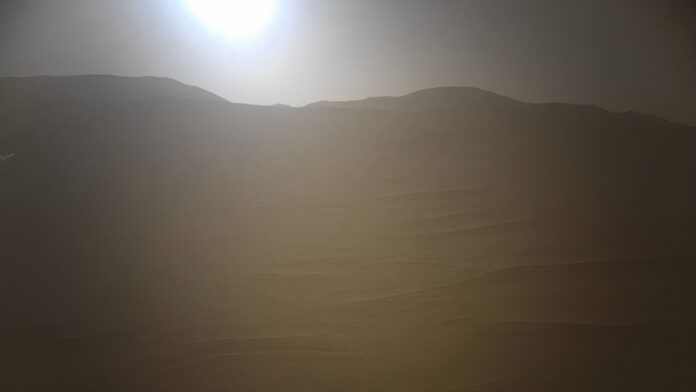Washington:
NASA’s Ingenuity Mars helicopter captured a shot of a sunset on the Red Planet, during its 45th flight.
The little chopper’s high-resolution colour camera captured the Sun on February 22.
The image shows the sun hanging slightly above the horizon of hilltops in the distance, caught in the process of setting on Ingenuity’s 714th Martian day, or sol.
The rays shining across the photograph help illuminate the rolling alien landscape of sand and rocks inside Jezero Crater.
Ingenuity helicopter landed with NASA’s Perseverance rover on the floor of Jezero Crater on February 18, 2021. It became the first rotorcraft ever to make powered flight beyond Earth.
Weighing just 1.8 kilograms, it has proved that aerial exploration is possible on Mars despite the planet’s thin atmosphere.
It was originally tasked with only a few test flights to prove its pioneering technology, but it has exceeded NASA’s expectations.
Ingenuity has now flown a total of 46 times, with an accumulated distance of 10.1 km, Space.com reported. Flights 45 and 46 occurred just three days apart, on February 22 and 25.
Ingenuity’s high-resolution colour camera is angled 22 degrees below the horizon. As a result, images relayed back to NASA are primarily focused at the ground, searching for interesting geological features and potential obstacles ahead.
Occasionally, however, it captures a sliver of Martian sky, giving a whole new perspective on the Red Planet.
Recently, NASA’s Curiosity rover captured first-ever “sun rays” on Mars.
The rays were imaged as the Sun descended over the horizon on February 2, with “rays of light illuminated a bank of clouds”.
These are also known as crepuscular rays, from the Latin word for “twilight.”
“It was the first time sun rays have been so clearly viewed on Mars,” according to NASA. (IANS)


